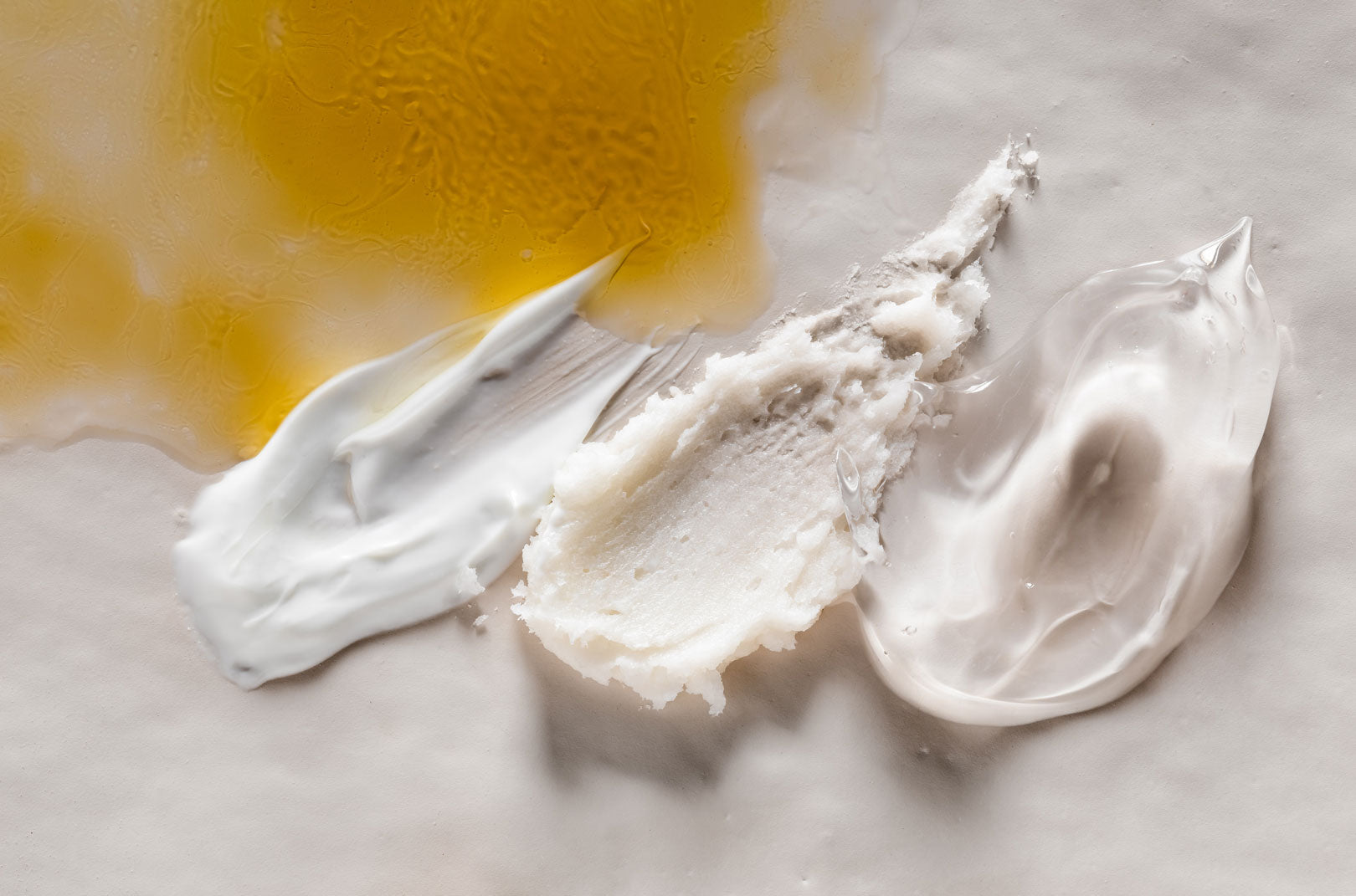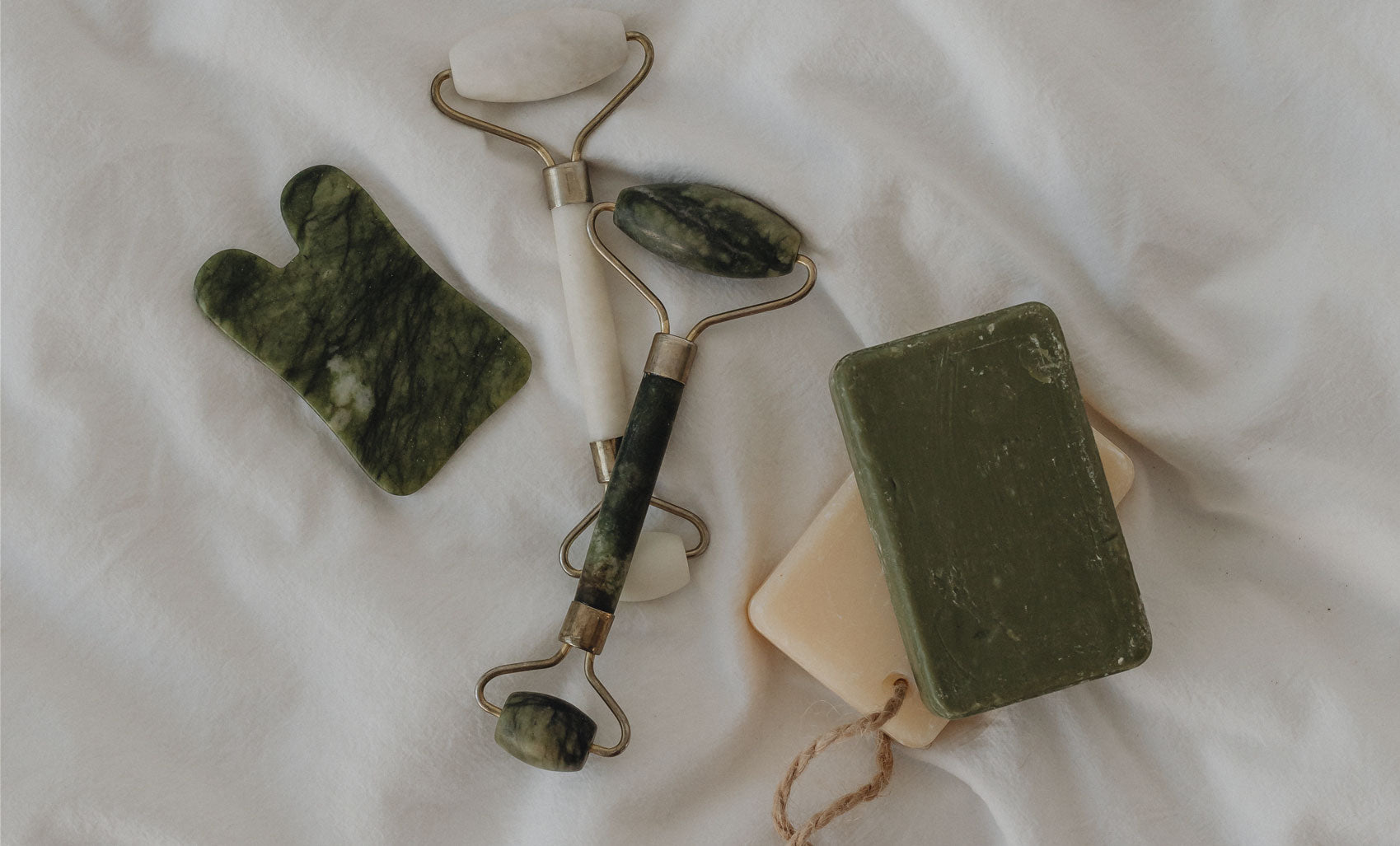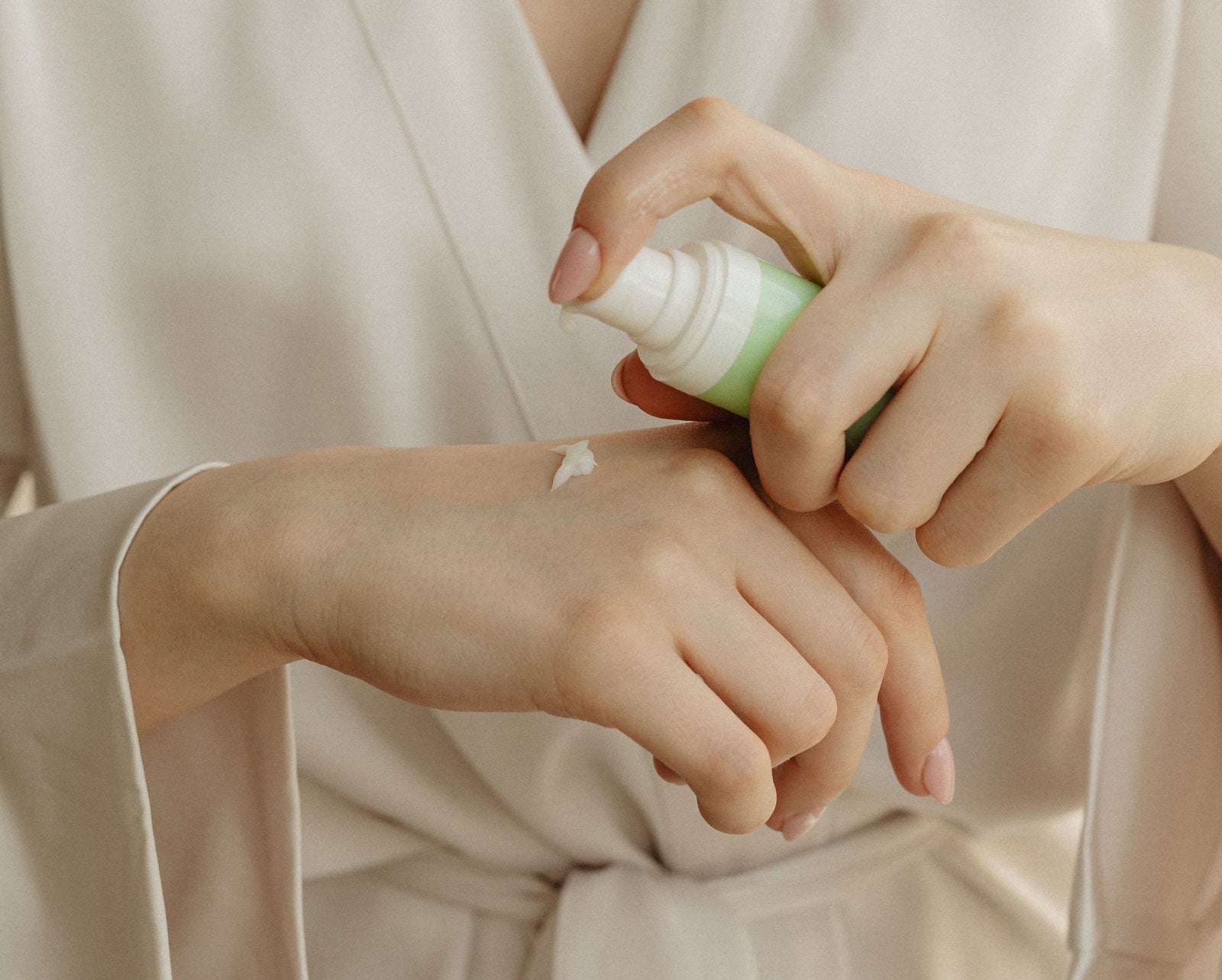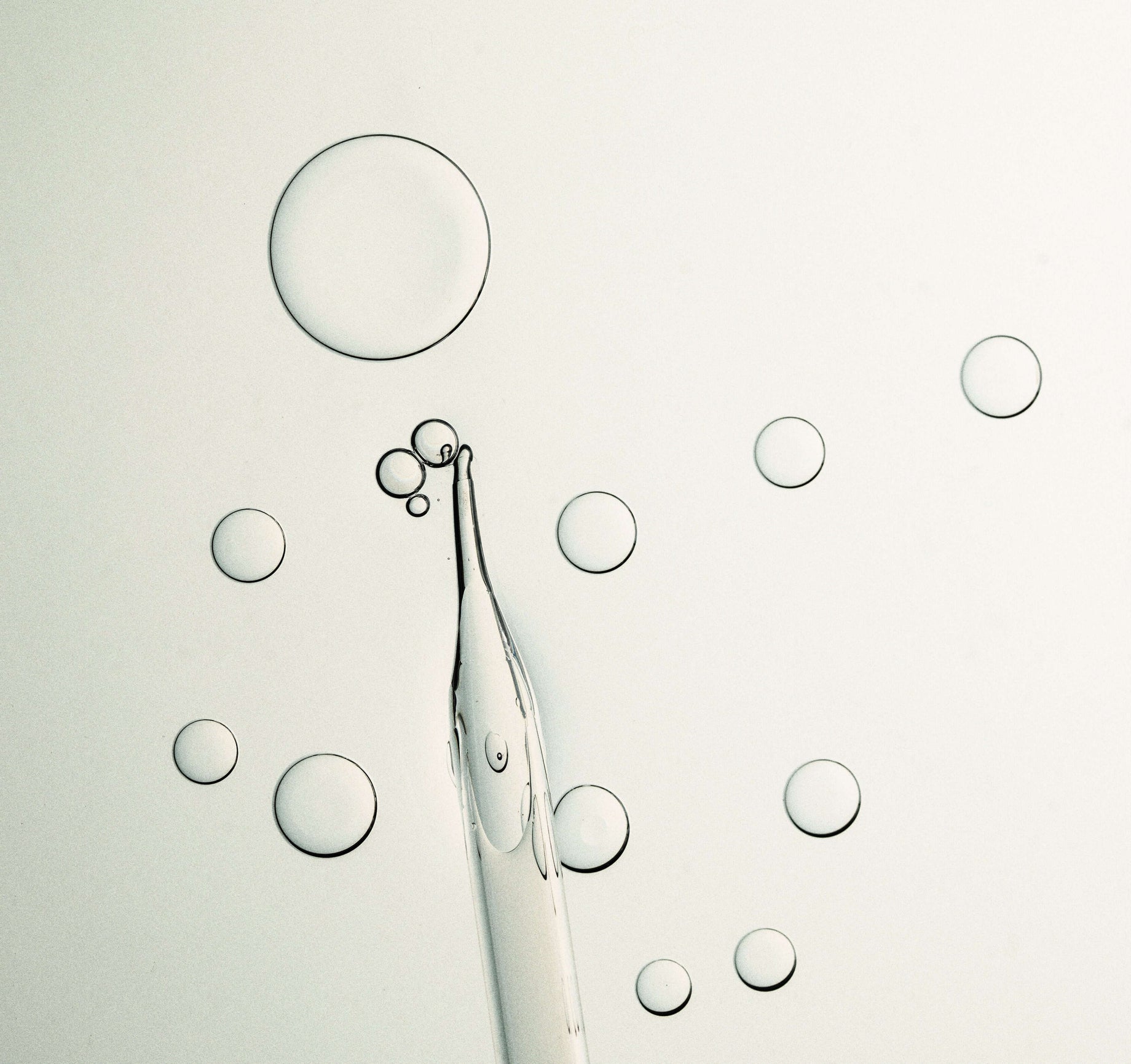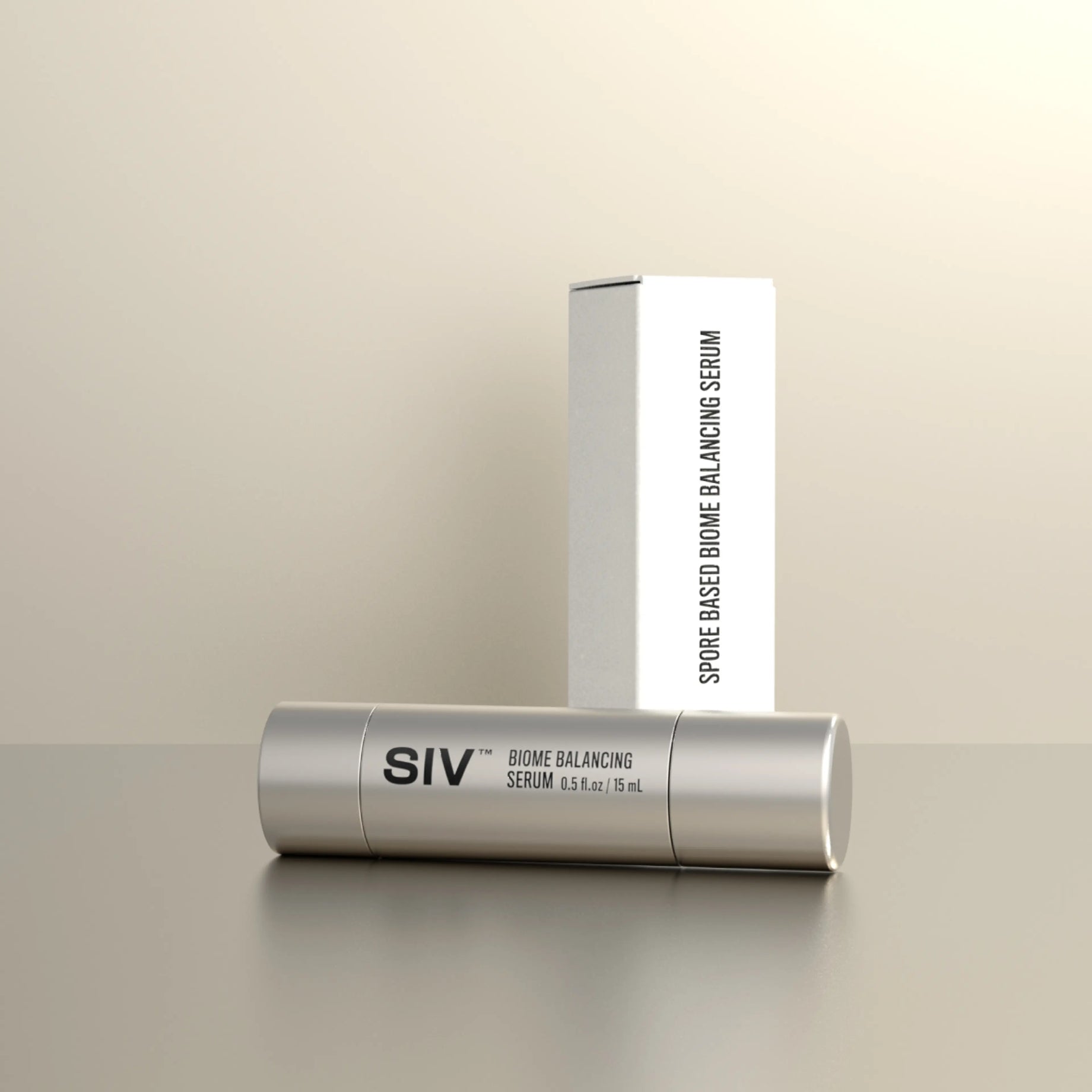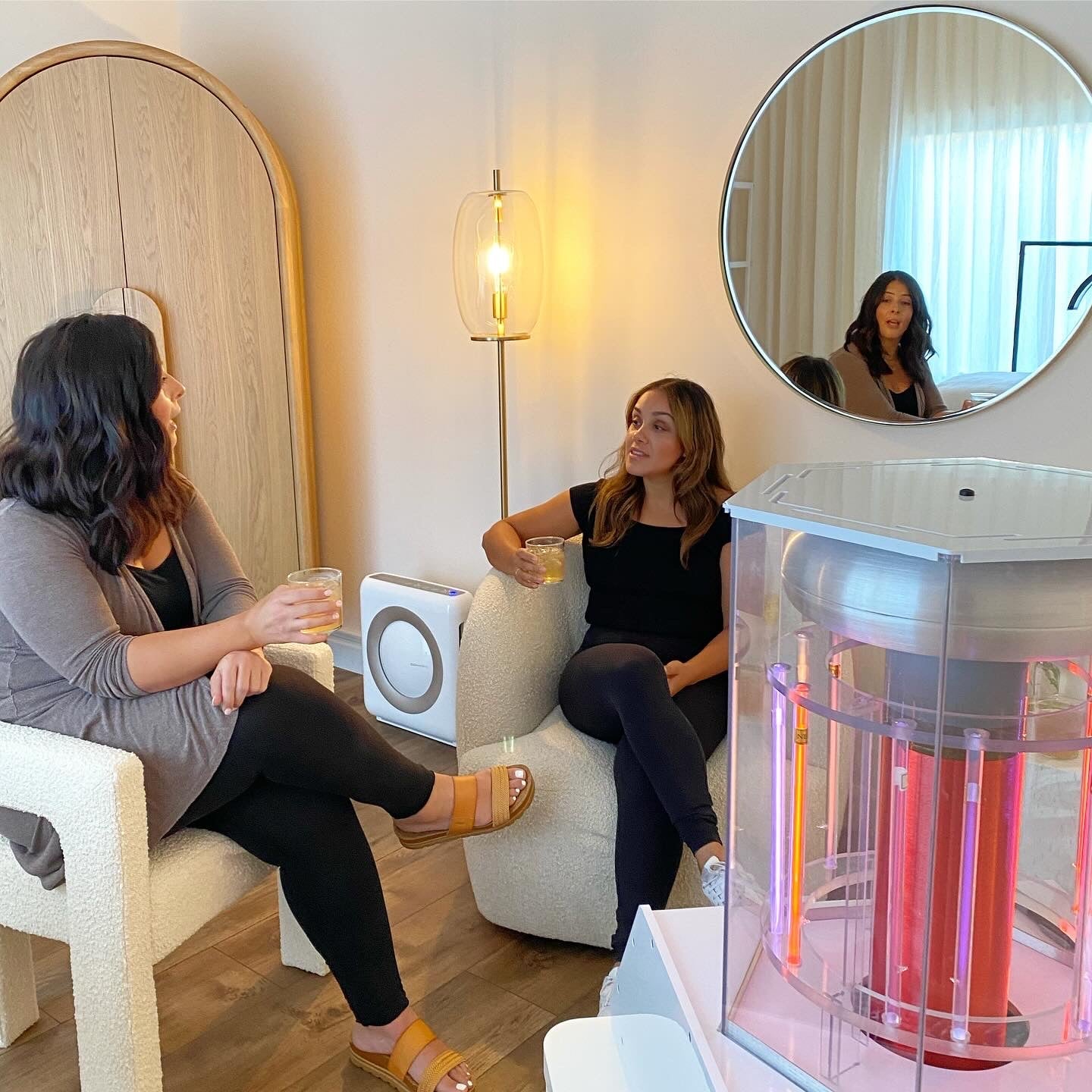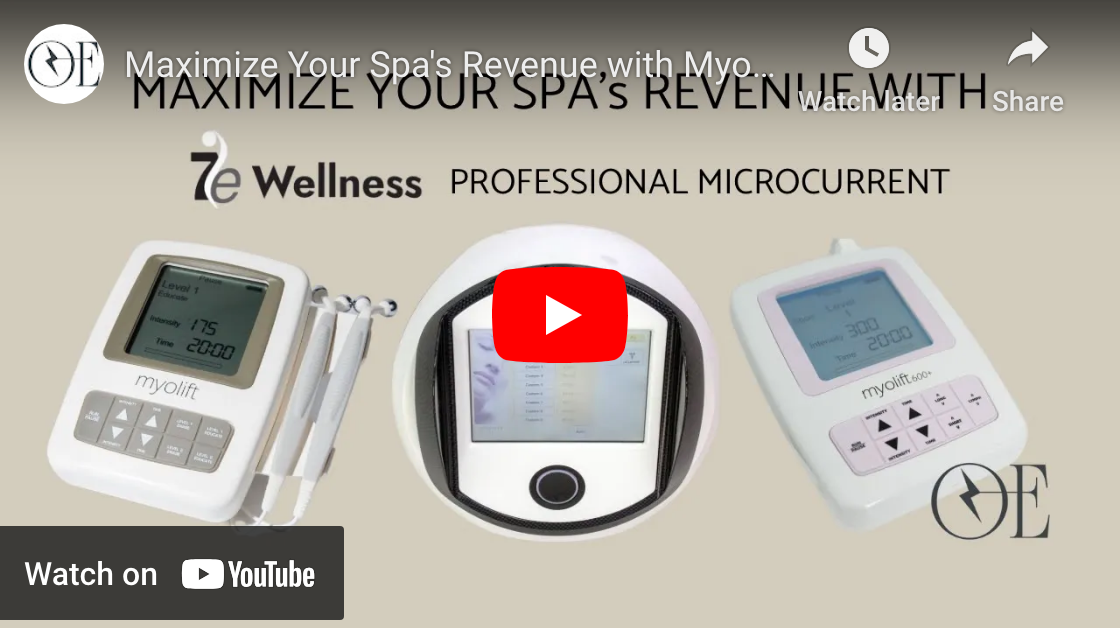I don’t know what July has been like for you but we ‘ve been having a heat wave here in LA. It’s been crazy hot! 109 one day. This has mostly turned me into an inside person. I hide in my apartment with the AC set to 61 degrees. But I unfortunately have to venture out on occasion and, when I do, I slather myself in SPF. I’m sure you’re doing the same. But do you know what exactly it is you’re putting on your skin? Or even how sunscreen works for that matter? Get ready to have your mind blown!

Sunscreen Basics - Chemical vs. Physical SPF
There are two forms of sun protection, chemical and physical blocks.
Chemical sunscreen is made up of compounds that create a chemical reaction on the skin’s surface. They work by changing UV rays into heat, then release that heat from the skin. Some of the most popular chemical SPFs are Oxybenzone, Octinoxate, Octisalate, Octocrylene, Homosalate and Avobenzone.
Physical SPF’s, also known as mineral sunscreens, create a barrier on the surface of your skin, protecting it from UV rays. Titanium Dioxide and Zinc Oxide are physical SPF’s.
Before we continue, I want to refresh everyone’s memory and give you a quick little anatomy lesson. This will be helpful information to know as we keep talking.
The Endocrine System
Your Endocrine system is made up of glands that produce and secrete hormones that regulate how your body works. Specifically it regulates your body’s growth, metabolism, sexual development, sexual functions, and tissue functions, in addition to your mood and ability to sleep. Pretty important stuff, right?! Keep this in mind as we move forward.
Chemical SPF Active Ingredients
So you bought a sunscreen and on the back of the bottle it lists “active Ingredients.” Do you know what they are? Do you care? Can you even pronounce them? Let’s look at what exactly companies choose to include in their sunscreens.
Octinoxate - This petroleum (yep just like the gas you put in your car) by-product is readily absorbed by the skin. It’s great at pulling other chemicals in with it too. These are then spread throughout your body via your blood stream. It’s also an endocrine disruptor (aren’t you happy you know what this means now?!) that mimics estrogen and can disrupt thyroid function.
Oxybenzone - This fun ingredient won the American Contact Dermatitis Society’s Allergen of the year in 2014, due to how easily it causes allergic reactions in the skin. It is a known endocrine disruptor, mimicking your body’s hormones and putting your reproductive system at risk.
Fun Fact: In addition to being awful for you, both Octinoxate and Oxybenzone bleach and destroy our ocean’s coral reefs. You put sunscreen on, you go into the ocean, it’s then washes off you and is carried away by the waves only to build up and destroy whole ocean ecosystems. On May 1st 2018, Hawaii became the first state to ban the distribution of SPF’s containing these two active ingredients. Yay Hawaii!
Octisalate - This too is a potential allergen, although less toxic than the above ingredients. On the other hand, it is a salicylic derivative and should be avoided while pregnant.
Octocrylene - This ingredient penetrates the skin, meaning it’s absorbed through the skin into the bloodstream. It then promotes the formation of free radicals (our number one advisory when it comes to aging, inflammation and degenerative disease) and damages our DNA. It is also a photosensitizer making you more sensitive to light. That’s right folks. Your sunscreen is actually increasing your likelihood of not just a sunburn but of cancer! Anyone else mad about this?
Homosalate - Evidense suggests it causes absorption of pesticides in the body. It too is an Endocrine disruptor.
Avobenzone - While less toxic than the rest of these actives, it breaks down quickly when exposed to sunlight. Therefore, it is usually paired with Octocrylene to make it more stable.
Okay, folks! Start filling up your trashcans!
Now that you’ve tossed out all the sunscreens you had containing these harmful chemicals, what do you use? The safest SPF’s utilize physical blocks made from minerals. Let's take a look at these more closely.
Titanium Dioxide - This inert mineral powder is a great UV filter because it blocks the absorption of harmful rays. It is not absorbed into the skin, making it additionally safer than the above options. However, it can be harmful if inhaled, in addition to, building up in the body if ingested. Weirdly enough, titanium dioxide is in TONS of food stuffs, like hard coated candy, gums and even powdered donuts.
Zinc Oxide - This powdery white inorganic compound sits on top of the skin to reflect UVA rays preventing it from absorbing. It's thinner texture, compared to Titanium, makes it a really popular ingredient in SPF's. It's actually considered the best ingredient for UVA protection. It is also incredibly soothing for the skin. In addition to being used as an SPF, Zinc is a popular ingredient in personal care products and makeup. It helps to heal wounds, burns, rashes and even heal acne.
Nanoparticles
If the majority of what I've covered thus far isn't new to you, then you're probably also aware that lots of people are concerned about the use of nanoparticle titanium and zinc use in sunscreens.
Here are the facts. While particle sizes vary among manufacturers, nearly all would be considered nanomaterials under a broad definition of the term, including the definition proposed in 2011 by the federal Food and Drug Administration. Some products promote this, while others claim to not be. My thought is that, if a company is promoting that their product contains nanoparticles it's probably on the smaller end of the particle scale and should be avoided. The EWG (Environmental Working Group) says, when applied topically, Zinc and Titanium nanoparticles are not absorbed by the skin (which I didn't even know until I started writing this). However, some research contradicts this. Being new technology, there's just not enough of this research yet.
But what does this really mean?!
The issue with nanoparticles being absorbed into the skin is that they are then absorbed into our bloodstream. These nanoparticles can cross the Blood Brain Barrier, a protective membrane encasing our brains. Essentially, nanoparticles could lead to toxic effects in various tissues and have negative effects on our blood and brain. But because, even if absorbed topically, the amount absorbed is so low, topical application of the products is less of an issue.
The biggest threat when it comes to nanoparticle Zinc and Titanium is inhalation.
This can happen when using a spray sunscreen or loose mineral powdered makeup. Did I just bum you out?! That spray you use on your kiddos, so they don't throw fits about you rubbing sunscreen all over their body, can be potentially harmful for them?! If you can ditch the spray, kudos to you. If you can't, just be mindful about it. Make your kids cover their mouths and nose when you spray them (you should too) and always do so in a well ventilated space. As for your makeup, if you can opt for a pressed powder instead of loose, go for it. Same rules apply.
Recap
- Stay out of the sun! Oh, if only it were that easy.
- If you can't pronounce it, don't use it! Skip chemical sunscreens all together. Save yourself and the corral reefs!
- Opt for a "non-nanoparticle" Zinc or Titanium SPF when possible.
- Ditch the spray SPFs or be very mindful when using them.
- Switch to a pressed mineral powder instead of a loose.
My Favorite Sunscreens

|
Devita Solar Protective Moisturizer SPF 30 This is a fantastic daily SPF, especially for oily skin. It's lightweight, hydrating (due to the hyaluronic acid), and layers well over the rest of your skincare. It isn't thick or sticky. My boyfriend even likes it and he hates sunscreen. They also make a great body option that, again, doesn't feel heavy like a traditional zinc based sunscreen. This is great for everyday protection. |
 |
Luzern La Defense Urban Protect Mineral SPF 30 For anyone wanting more from their sunscreen. Not only does this product protect you from UVA and UVB rays, it protects you from smog and ozone exposure, plus it's anti-blue light shield protects you from harmful (aging) free radical damage. A fantastic daily protection for all city dwellers, packed with antioxidants, vitamin C + E and hyaluronic acid. This is my new go to! |
 |
Honua Skincare Malu Protecting Day Cream + SPF 30 This incredibly nourishing reef safe SPF can double as a moisturizer. It feels oil rich, creamy and hydrating. It's devine scent is reminiscent of a Hawaiian garden. Plus, a percentage of sales goes toward protecting the Hawaiian coastline. |
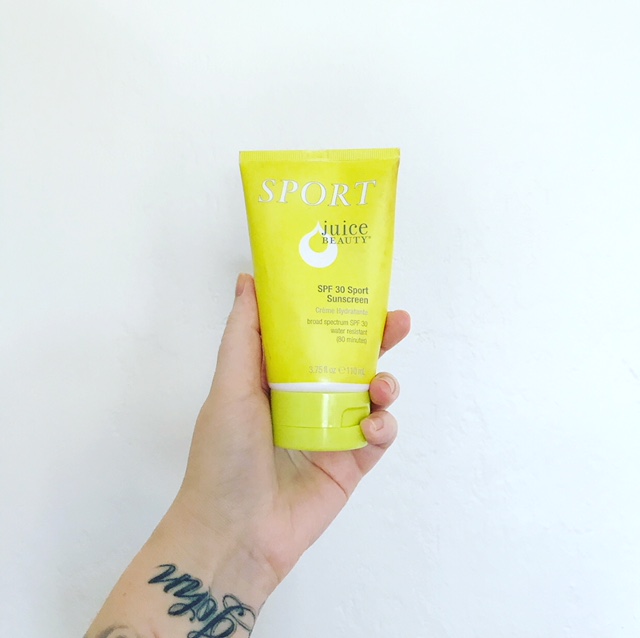 |
Juice Beauty SPF 30 Sport Moisturizer I wear this every morning I hike. It's a little thicker, making it water and sweat resistant. A great option for active peeps! However, it can be a little sticky for everyday use. I also really like their Stem Cellular CC Creams. It's a lightly tinted SPF 30 with plant stem cells and antioxidants. |
Brands That Bum Me Out
Andalou Naturals - I really like this brand. I use a lot of their products. It's a natural skincare line with relatively clean ingredients at a very affordable price point. You can find it at your local Sprouts, Whole Foods, I think even Target. Some of their SPF options are natural physical blocks (all of the tinted CC's and BB's). But please make sure you read the ingredient list before you buy products, even from brands you know and love. Here's the active ingredients list from their Ultra Sheer Daily Defense Facial Lotion which uses some of the same actives as their DIY Booster SPF Facial Serum.

Eminence Organics - This is a widely used natural spa brand. Almost every "organic facial" you see on a hotel or resort spa menu uses Eminence Organics, from The Ritz Carlton to Burke Williams. Here's a picture of their most popular Tropical Vanilla Day Cream SPF32.

The takeaway here is to be diligent about reading labels. Never just assume a product must be good for you.
This isn't my first sunscreen post. As you can see, there's a lot of information to cover. If you're interested in learning more, especial about SPF ratings, check out my other post.
Disclosure: This is not a sponsored post. This post does contain some affiliate links, meaning, at no additional cost to you, I will earn a commission if you click through and make a purchase.


